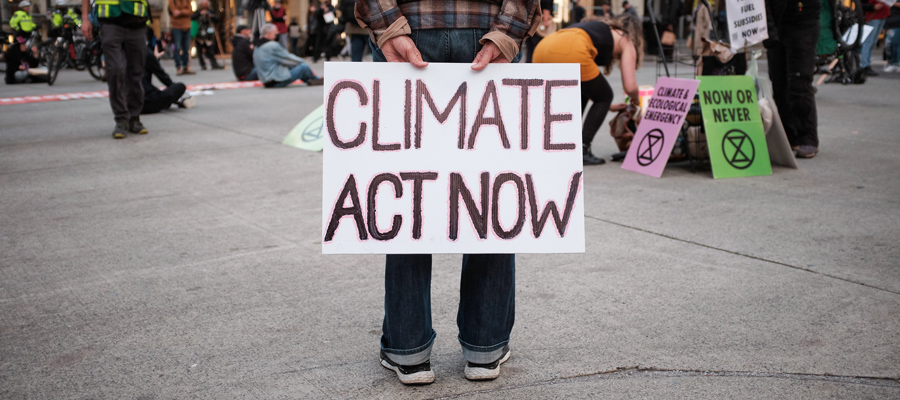Every revolution is about power
So what does a sustainable economy really look like, and how do we get there? Climate change essentially means a huge mitigation effort on greenhouse gases culminating in something close to zero emissions by mid-century at the latest. This means phasing out fossil fuels entirely; or minimally, if it comes out of the ground emissions have to end up back underground (the intuition behind carbon capture and storage or CCS). Such changes are tantamount to a new industrial revolution.
Getting there means going in a big way towards clean electricity to power the various energy services we consume (mobility, heating, production of stuff, etc). For BC, with a large chunk of hydroelectric power already on tap, we are starting in a good place (Quebec is tops in hydropower in Canada). Close to 90% of BC’s electricity is hydropower. Building up more electricity through hydro and other renewable sources is going to be a top priority going forward to replace the small bit of fossil-fuel generated electricity and more.
The more includes things like electric vehicles and conversion of all housing to full electricity (and away from natural gas and heating oil). BC Hydro estimates that this would increase demand by about 35,000 GWh (passenger vehicles only and residential space and water heating), an increase of almost 60% over the approx 59,000 GWh currently supplied by BC Hydro.
The challenge gets bigger if we add in all other energy consumption currently serviced through fossil fuels. SFU’s John Nyboer, in a report done for the Ministry of Energy, Mines and Petroleum Resources figures about 13% of BC’s total energy comes from renewables (including hydropower but also some biomass). Industry also generates electricity for its own purposes, another 14,000 GWh above what BC Hydro generates, and most of that is hydropower, too. Still, we are left with a fairly sizeable gap between existing clean electricity generation and what would be required if we were to electrify everything.
So how do we close that gap? First of all, we need to be aggressive on energy efficiency to squeeze the same amount of services out of a lot less power. Electrification itself can help us out here, as electric engines and drivechains can be double as efficient as combusting fossil fuels on a straight-up energy basis (according to this article). Improvements in technology are also going to play a role, and government-mandated standards for the marketplace should be much more aggressive (for example, EnergyStar should be the minimum to sell in the marketplace, and subsidies should only go to top-in-class performers). Capital stock turnover will do a lot of the heavy lifting for us, but we could speed that process along with accelerated capital cost allowances and investment tax credits.
While energy efficiency can close some of the gap, I’m not sure it can close all of it. One conservation potential review report for BC Hydro identified 10,400 GWh as “achievable” through efficiency gains by 2020 (though more than 19,000 GWh are considered economically viable), so we also need to consider behavioural and structural changes, too. Land use and urban form are key to long-run emission reductions, in particular shifts to lower emission modes of transportation and denser, more compact communities with hyper-energy-efficient building design, and a mix of uses and amenities within walking or biking distance. It will take several decades to turn over such capital stock, and retrofitting the suburbs will challenge our creativity, but this should inform urban planning decisions.
More data analysis is required but this all leads me to think that increasing clean generation capacity is going to be needed (although there is existing capacity exported to the US that could also be tapped). On a small scale, this could mean solar panels on household rooftops, small-scale wind, and district heating operations. On a medium scale, run-of-the-river projects, wind farms and tidal power. And on a big scale, investments like the Site C dam in the Northeast. All of these things should be on the table, and developed in the context of the public utility, BC Hydro.
If we get really good at producing clean electricity, there might be a surplus available. One option would be to export that power to the US or to Alberta, as we currently do. But another option would be to use that clean power to expand opportunities for next-generation “green” or “closed-loop” manufacturing. The latter is certainly more interesting as an economic and industrial development strategy, and if folks like Jeff Rubin are right, the competitive advantage of Chinese manufacturing will be severely eroded by much higher transport costs from peaking of oil production (and carbon tariffs), meaning lots of green manufacturing jobs that could be relocated to North America.
So that is a quick synopsis of the BC story, representing a big chunk but not all greenhouse gas emissions. As part of the transition, natural gas (methane) is a key fuel; it is a fossil fuel but the cleanest burning of the lot. If CO2 emissions from burning it could be sequestered, we could produce energy and hydrogen as an alternative secondary fuel. No one seems to be talking about hydrogen these days, but if it could become a major fuel source, it could be a future for an oil and gas industry that won’t be too happy with what I’ve written above.
Topics: Climate change & energy policy, Environment, resources & sustainability


